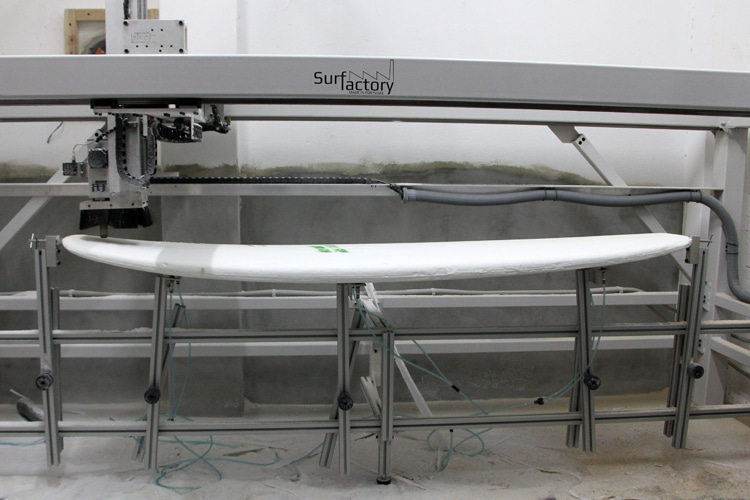Riding the Waves of Innovation: How Technology Transforms Surfboard Manufacturing
In the world of surfing, the fusion of technology and tradition has given rise to a new era in surfboard manufacturing. From ancient wooden planks to the sleek, high-performance boards of today, the evolution of surfboard design and production has been nothing short of remarkable. In this blog post, we’ll delve into the ways technology has revolutionized the surfboard manufacturing process, shaping the boards that surfers ride and pushing the boundaries of what’s possible.

Digital Design and CAD Software
One of the most significant changes in surfboard manufacturing is the integration of digital design and computer-aided design (CAD) software. Traditional shaping methods involved handcrafting boards based on a shaper’s experience and intuition. Today, shapers use sophisticated software to create precise 3D models of surfboard designs. This allows for a level of precision and customization that was once unimaginable.
CAD software not only speeds up the design process but also enables shapers to experiment with various shapes, rocker profiles, and concaves virtually before committing to physical production. This digital approach has democratized surfboard design, allowing both established shapers and newcomers to explore innovative shapes and push the boundaries of performance.
Advanced Materials
The materials used in surfboard construction have undergone a significant transformation, thanks to advancements in technology. Traditional surfboards were primarily crafted from wood, often weighing more than today’s lightweight alternatives. Today, high-tech materials like epoxy resins, carbon fiber, and foam cores have become standard in the industry.
Epoxy resins, in particular, have gained popularity for their superior strength-to-weight ratio and increased durability compared to traditional polyester resins. Carbon fiber reinforcements provide additional strength and responsiveness, allowing for lighter boards that maintain their structural integrity under the forces exerted during surfing.

Precision CNC Machines
Computer Numerical Control (CNC) machines have become a game-changer in surfboard manufacturing. These machines use digital files to precisely shape foam cores, ensuring consistency and accuracy in the production process. CNC machines have replaced much of the manual labor involved in shaping, reducing human error and enhancing the repeatability of board designs.
Automation through CNC technology allows for the production of large quantities of surfboards with minimal variation between them. This not only benefits established manufacturers but also opens the door for smaller, niche shapers to compete in the market, offering unique designs without the need for mass production facilities.

3D Printing and Additive Manufacturing
The cutting-edge realm of 3D printing has begun to make waves in surfboard manufacturing. While not yet ubiquitous, 3D printing holds the promise of producing fully customizable boards with intricate designs and features. Additive manufacturing allows for the creation of complex geometries that were once impossible with traditional shaping methods.
One of the advantages of 3D printing is the ability to experiment with novel designs, creating boards with optimized hydrodynamics and structural configurations. While this technology is still in its infancy in the surf industry, its potential to revolutionize customization and performance is undeniable.

Technology has ushered in a new era of innovation in surfboard manufacturing, transforming the way boards are designed, shaped, and produced. From digital design tools to advanced materials and automated manufacturing processes, surfers now have access to a diverse range of boards that cater to individual preferences and riding styles.
As technology continues to evolve, we can expect further advancements in surfboard manufacturing, pushing the boundaries of what’s possible in terms of design, performance, and sustainability. The intersection of craftsmanship and technology ensures that the ancient art of riding waves remains not only a tradition but also a dynamic and ever-evolving pursuit of excellence. So, whether you’re a seasoned pro or a novice catching your first wave, the surfboards of today are a testament to the ongoing synergy between surfing and technology.

